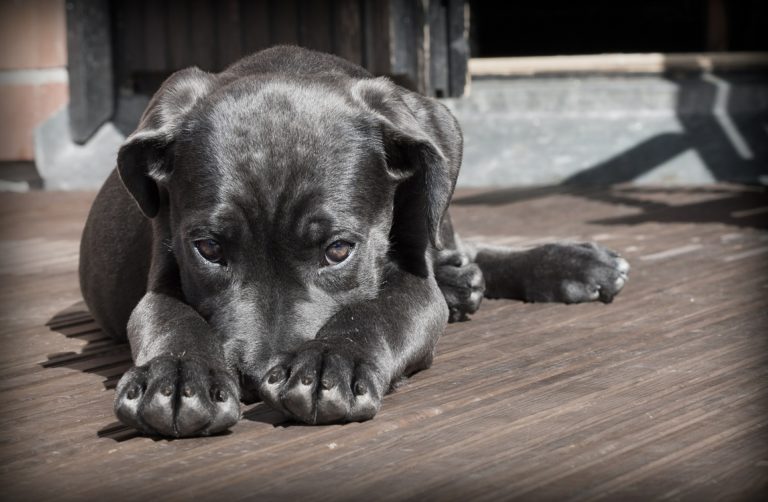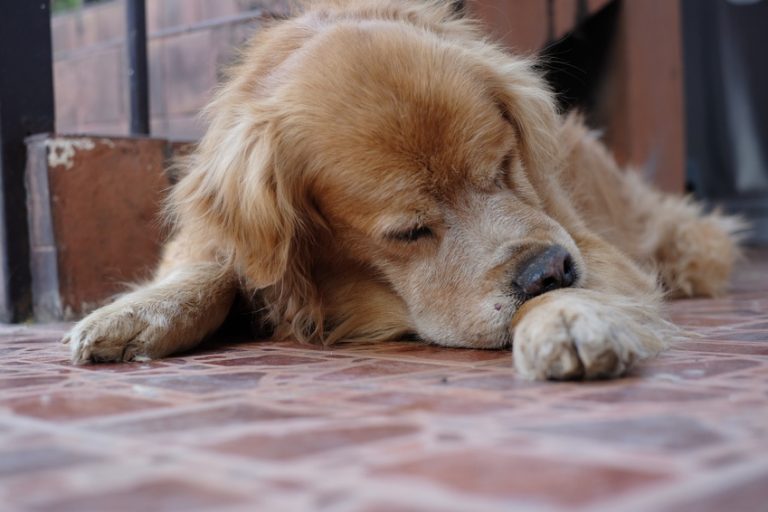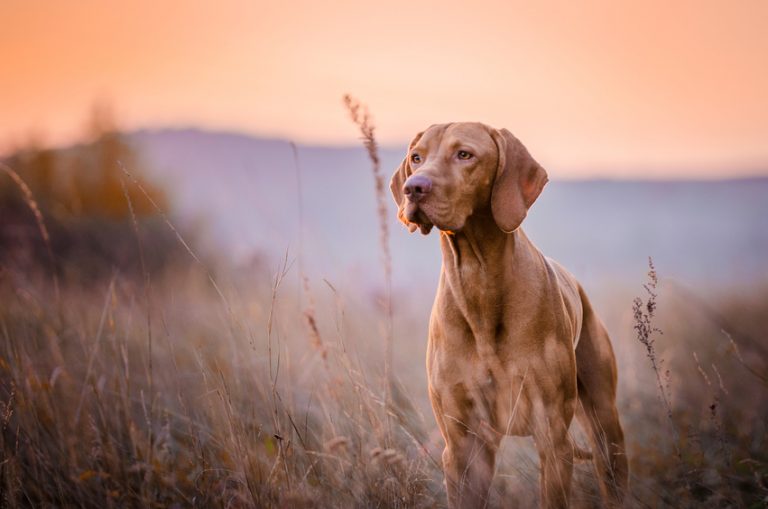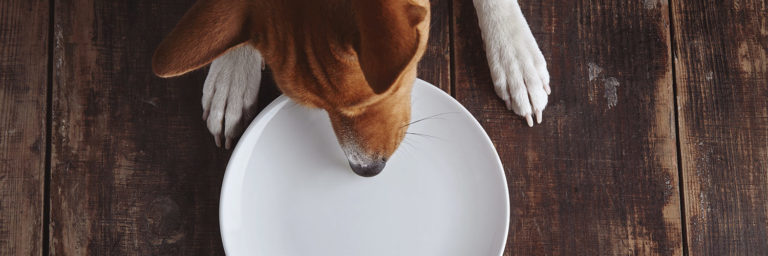Why Do Dogs Pant?
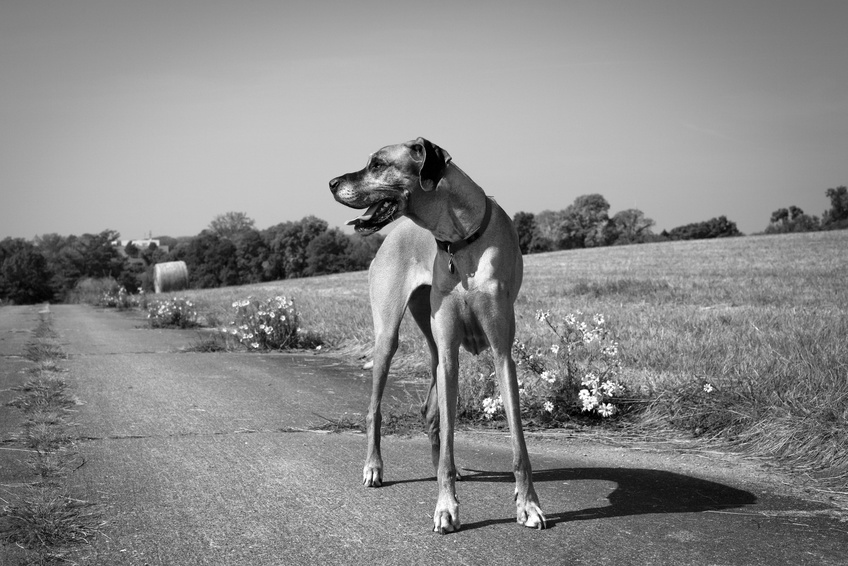
Contents of Article
It doesn’t matter what time of year it is, some dogs seem to always be panting.
But is panting a normal and healthy behavior, or is it a cause for concern?
There is no simple answer to this question except for this:
It depends.
Panting is certainly a normal dog behavior, but there are also times when it can be very abnormal? So, how do you know the difference?
In this article, we’ll cover all of the reasons your dog might be panting, both the usual and unusual, so you can better understand your dog’s behavior.
Let’s start with the usual reasons.
He’s Trying to Cool Down
Dogs aren’t like people.
This might seem like an obvious statement, but it’s true! Your dog’s physiology is much different than your own, especially when it comes to his body’s cooling mechanisms.
When you start to feel warm, glands in your skin begin to produce sweat. As the sweat evaporates from your skin, it removes some of the excess heat.
Dogs don’t sweat like people do because their bodies are covered in hair.
Your dog does have sweat glands, but only in his nose and the pads of his feet. Because your dog can’t sweat to cool off, his body utilizes a different method of heat exchange – panting.
While excessive panting in dogs may be abnormal, it is completely normal for your dog to start panting if he starts to feel too warm.
What are the other normal reasons for your dog panting?
He’s Excited or Happy
Some dogs tend to pant when they become excited or when they are happy – it’s just a personality trait.
If you aren’t sure whether this is the reason for your dog panting, look for other signs of happiness, primarily in his body language.
A wagging tail is usually a sign of happiness.
You should also check your dog’s facial features – if he’s happy, they should appear relaxed.
Don’t forget to check his eyes – are they bright and happy?
As long as your dog’s panting is mild and it is accompanied by positive body language, you probably don’t need to be concerned.
If your dog is panting more than usual, however, don’t automatically assume the worst but understand that this behavior could be a sign of an underlying problem if it doesn’t fit the situation.
When your dog starts panting, ask yourself these questions:
- Is it hot out?
- Is my dog trying to cool himself off?
- Is my dog wagging his tail?
- Is my dog acting happy or excited?
If your answer to each of these questions is “No,” it might be cause for concern.
If you aren’t sure, ask yourself these questions:
- Does my dog’s panting seem excessive compared to his normal panting pattern?
- Does my dog’s panting happen at inappropriate times?
- Is my dog’s panting louder, harsher, or raspier than usual?
- Is my dog panting with more exertion than usual?
If you answered “Yes” to one of these questions, you may want to take a closer look to identify the underlying cause of the problem.
Here are some of the reasons your dog might be panting that could be a sign of a problem:
He’s Becoming Overheated
A panting dog is a normal sight during the summer.
But when does panting become abnormal?
Heavy panting in dogs, particularly when the temperature is high, could be a sign of impending heatstroke and it is definitely not something you want to ignore.
Though panting can help to cool your dog down, it isn’t a particularly efficient method of heat exchange. If you don’t take steps to cool him down, his body temperature could rise to a dangerous level and he might go into shock.
Heatstroke can become fatal, so don’t ignore heavy panting in dogs!
Here are some of the most common signs of heatstroke:
- Excessive panting or rapid panting
- Bright red tongue
- Gray, red, or pale gums
- Thick, ropey saliva
- Depression or lethargy
- Sudden weakness
- Dizziness or lack of coordination
- Vomiting, sometimes with blood
- Diarrhea
If your dog doesn’t receive treatment, he could go into shock and might even fall into a coma. At that point, it may be too late to save him.
Don’t let it get to that point!
As soon as you begin to suspect that your dog’s heavy panting is related to heatstroke, take his temperature – if it is 109°F or higher you need to take immediate action to cool him down.
Your first step is to take your dog into the shade or, if you have air conditioning, take him inside.
Next, start to lower his body temperature by draping a cool, damp towel over his back.
Don’t drench him with ice water!
If your dog’s body temperature drops too quickly, it could cause him to go into shock.
To help your dog cool down, have him stand in a few inches of cool water or use a fan to create some air movement around him. If your dog can drink on his own, give him some cool water – don’t force-feed him because he could aspirate or choke.
Keep checking your dog’s internal temperature every 5 minutes while you exercise cooling measures – as soon as it decreases to 103°F, dry him thoroughly and wrap him in a towel or blanket to prevent heat loss.
Your next step?
Take your dog to the vet!
Even if your dog seems fine, he needs to be examined by a veterinarian as soon as possible to make sure he isn’t dehydrated and that he hasn’t suffered from any complications.
If your dog won’t stop panting but he isn’t overheated, it could be due to another reason.
Here’s the next possibility:
He’s Having Trouble Breathing
It isn’t uncommon for owners of brachycephalic breeds to comment that their dog pants all the time.
Some breeds are predisposed to breathing problems.
Dogs that have short or “pushed-in” faces are referred to as brachycephalic breeds because they often exhibit anatomical abnormalities that lead to breathing difficulties.
Brachycephalic syndrome is a term that covers three such abnormalities:
- Elongated soft palate
- Stenotic nares
- Everted laryngeal saccules
The first of these, elongated soft palate, refers to an elongated piece of tissue at the back of the throat that can protrude into the airway, interfering with the normal movement of air into and out of the lungs.
Stenotic nares are simply narrow or malformed nostrils that collapse inward when the dog inhales.
Everted laryngeal saccules are tiny bits of tissue that can be pulled into the trachea during inhalation, obstructing air flow.
Some of the breeds most likely to exhibit these conditions include Bulldogs, Pugs, Pekingese, Boston Terriers, and Boxers.
Even if you suspect that your dog is panting heavily due to one of these anatomical abnormalities, you should still make sure that he isn’t overheating. Brachycephalic breeds have a higher risk for heatstroke because they aren’t able to pant as efficiently as other breeds.
Why else might your dog be panting heavily?
He is Anxious or Stressed
If your dog pants when it doesn’t seem to be connected to high temperatures, it could be because he is anxious or stressed.
Dog experts refer to it as “behavioral panting”.
To determine whether this might be the case, examine your dog’s body language and behavior to look for the following:
- Yawning
- Whining
- Tucked tail
- Hiding
- Drooling
- Flattened ears
- Lip licking
- Crouched posture
- Trembling
- Dilated pupils
Some dogs may also refuse to eat, exhibit clingy behavior, or may even lose control of their bladder or bowels.
If your dog won’t stop panting and you notice some of the other behaviors listed above, try to identify whatever it is that is making your dog anxious or frightened.
A car ride?
A visit to the vet?
An unfamiliar person coming to the door?
Fireworks or other loud noises?
If you can identify the source of your dog’s anxiety, you can remove your dog from the situation and then take steps to address his fear.
When fear or anxiety aren’t the cause of your dog panting, look to the next possibility:
He’s Sick or In Pain
Dogs have a natural instinct to hide their pain and weakness – even from humans – so if your dog is panting a lot, check for signs of pain or illness.
There are several conditions which may cause your dog to pant:
- Cushing’s disease
- Anemia
- Laryngeal paralysis
- Various heart and lung diseases
Cushing’s disease, also known as hyperadrenocorticism, is the result of overactive adrenal glands. This condition typically affects older dogs but if you notice your puppy panting and he also exhibits unexplained weight gain, increased urination and thirst, hair loss, and restlessness, it could be a sign of Cushing’s disease.
Anemia is the result of abnormally low volume of red blood cells and insufficient hemoglobin. These two things combined limit the amount of oxygen being dlivered to the dog’s muscles and tissues which can cause heavy panting as well as lethargy, weakness, elevated heart rate, pale gums, exercise intolerance, confusion, and sudden collapse.
Laryngeal paralysis occurs when the muscles and cartilage responsible for opening and closing the larynx malfunction. As the dog inhales, the larynx doesn’t open enough and it makes breathing difficult – it may also produce a raspy, panting sound.
Finally, excessive panting in dogs could be a sign of various heart and lung diseases like dilated cardiomyopathy. Other signs of heart disease may include exercise intolerance, coughing, and sudden episodes of weakness or fainting.
If your dog pants at night and seems to be distressed or uncomfortable, look for other signs of illness.
Another reason your dog might be panting is this:
He’s Having an Allergic Reaction
If your dog won’t stop panting and none of the reasons above seem to fit, it could be that he is having an allergic reaction to something he’s eaten or been exposed to.
When your dog pants heavily and he also seems to be lethargic or starts vomiting, poisoning or a severe allergic reaction is a strong possibility – look around to see what your dog might have ingested.
Don’t just look for chemicals or obvious poisons – there are plenty of foods and other natural substances that can be toxic to dogs.
Read about the foods that are and are not safe for your dog to eat here.
Once you find the substance, call the Animal Poison Control Center for instructions on what to do next – the number is (888) 426-4435. Keep in mind that you may be charged a $65 consultation fee to speak with a licensed veterinarian, but your dog’s health and safety is worth the cost.
For some dogs, panting is a daily occurrence.
For others, it is something that only happens in warmer weather.
Every dog is unique and, as a dog owner, it is your job to become familiar enough with your dog’s personality and behavior that you are able to quickly identify abnormal behaviors because they could be an indication of a serious problem.
If you notice your dog breathing heavily or panting excessively, don’t just chalk it up to normal dog behavior and ignore it – especially if it seems to happen without good reason.
Don’t take the risk!
Even if you determine that your dog’s panting is simply normal dog behavior, you still need to exercise a certain degree of caution because the situation could always take a turn for the worse.
When your dog starts panting to cool himself down, give him a helping hand so he doesn’t become dangerously overheated and succumb to heat stroke.


